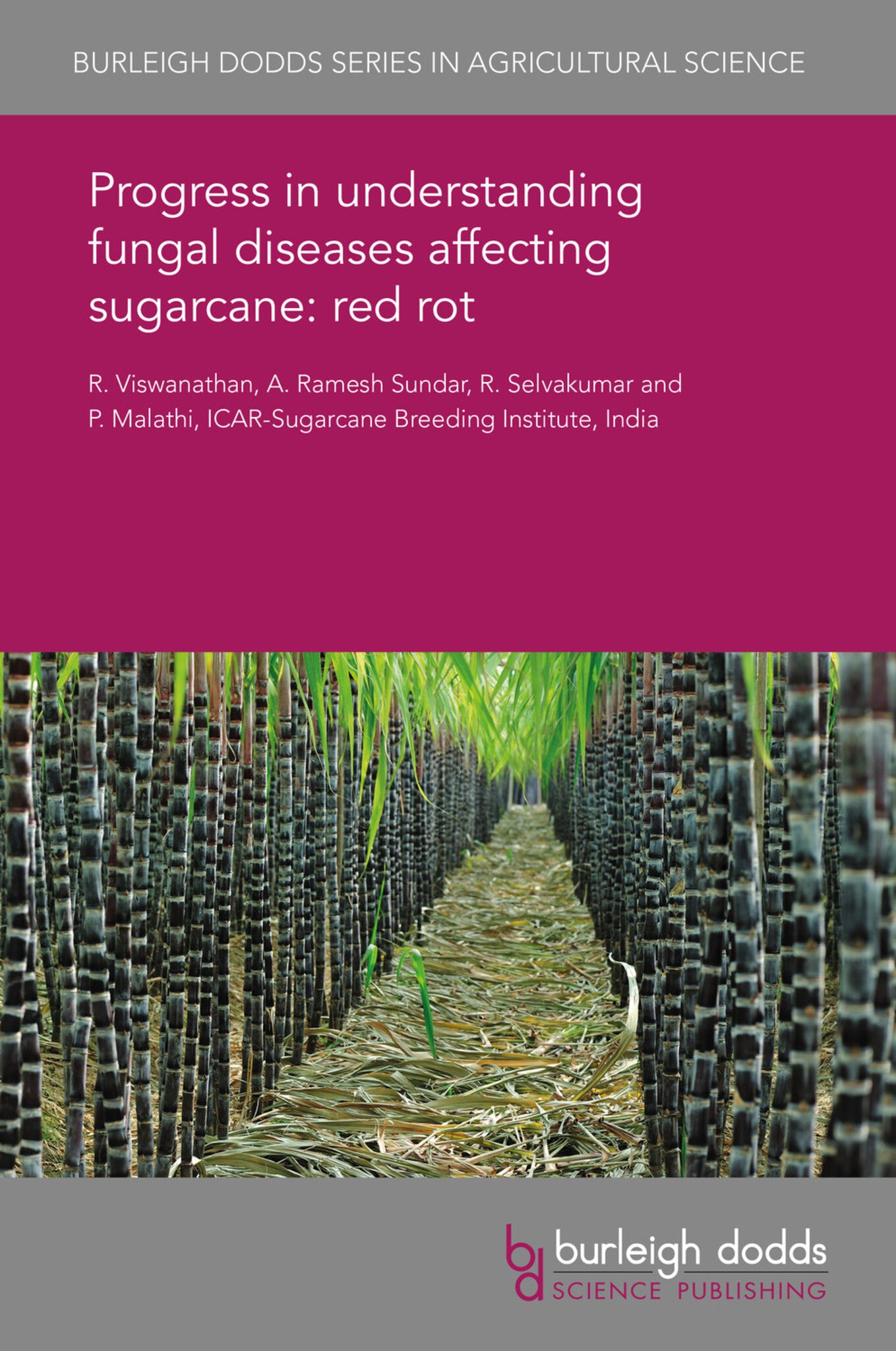We're sorry. An error has occurred
Please cancel or retry.
Progress in understanding fungal diseases affecting sugarcane: red rot
Regular price
£25.00
Sale price
£25.00
Regular price
£25.00
Unit price
/
per
Sale
Sold out
Re-stocking soon
Red rot is a disease of sugarcane stalks caused by the fungal pathogen Colletotrichum falcatum. It has been recorded in 77 countries worldwide, but occurs most severely in South Asian countries, es...
Read More

Some error occured while loading the Quick View. Please close the Quick View and try reloading the page.
Couldn't load pickup availability
- Format:
-
05 March 2018

Red rot is a disease of sugarcane stalks caused by the fungal pathogen Colletotrichum falcatum. It has been recorded in 77 countries worldwide, but occurs most severely in South Asian countries, especially India, Nepal, Pakistan, Myanmar and Bangladesh, as well as in Thailand and Vietnam. Developing red rot-resistant varieties has been the major management strategy to deal with the disease in most countries. This chapter reviews the economic impact of red rot, diagnosis, pathogen variability, application of molecular tools to understand pathogen biology, varietal resistance, screening methods and new management approaches including fungicide delivery.

Price: £25.00
Publisher: Burleigh Dodds Science Publishing
Imprint: Burleigh Dodds Science Publishing
Series: Burleigh Dodds Series in Agricultural Science
Publication Date:
05 March 2018
ISBN: 9781838795986
Format: eBook
BISACs:
TECHNOLOGY & ENGINEERING / Agriculture / Sustainable Agriculture, Agronomy and crop production, TECHNOLOGY & ENGINEERING / Agriculture / Agronomy / General, TECHNOLOGY & ENGINEERING / Pest Control, Sustainable agriculture, Pest control / plant diseases

1 Introduction 2 Symptoms and economic impact 3 Disease transmission 4 Diagnosis and disease management 5 Understanding host–pathogen interactions 6 Summary and future trends 7 Where to look for further information 8 Acknowledgements 9 References



